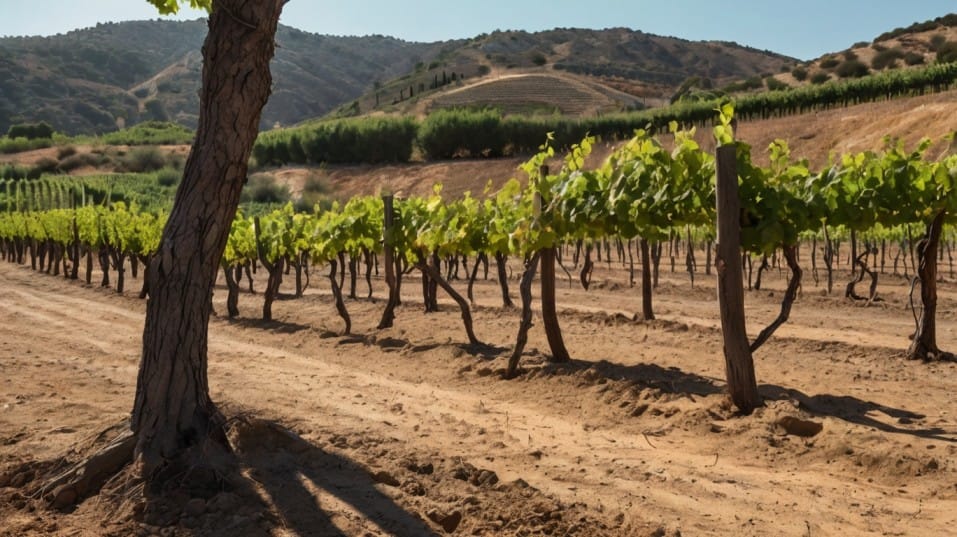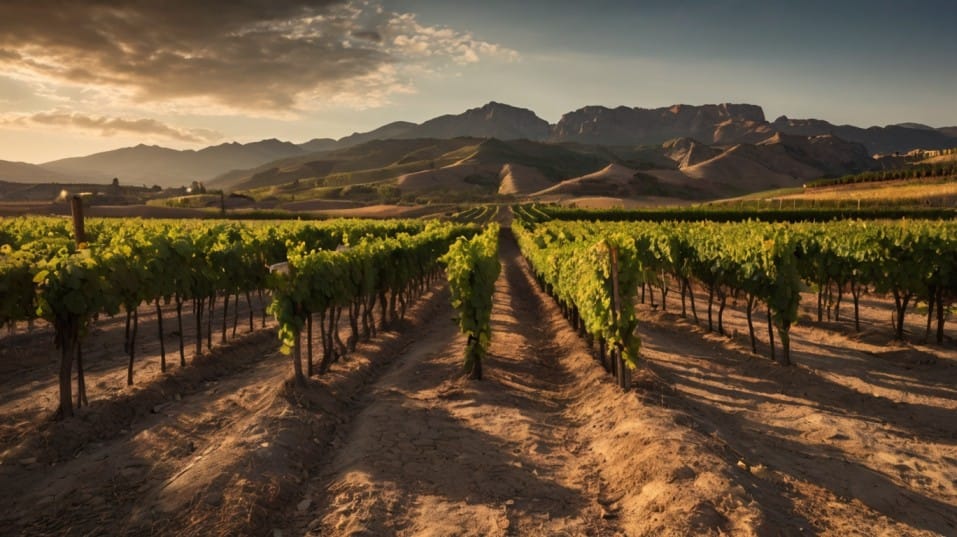Why Spanish Reds Taste Earthier Than You Expect
Why do Spanish reds taste so earthy? Learn what shapes their bold, grounded style—and how to taste with more confidence and clarity.

Why do Spanish red wines taste like the land they come from—more dust than fruit, more grip than gloss? If you’re used to juicy, polished reds, the grounded style of Spain can feel like a surprise.
But that earthy edge? It’s no accident. It’s a clue. One that, once you learn to spot it, unlocks a world of deep, quietly powerful wines built to reflect where they’re from—and reward those who pay attention.
The Ground Beneath the Grape
To understand the flavor, start with the land. Spain is one of the most mountainous wine-producing countries in the world, and that matters. High elevations, poor soils, and sparse rain create the kind of stress that vines love.
When vines struggle, they dig deep—literally. They send their roots into fractured limestone, chalk, gravel, and clay in search of water and nutrients. In the process, they pull up complex, mineral-driven flavors you won’t find in softer soils.
Grapes grown in this kind of environment tend to produce wines with less sugar, more tannin, and a stronger sense of what sommeliers call “terroir”—the taste of a place.
You’re not tasting dirt, exactly. You’re tasting what the vine pulled from that dirt over decades.
In regions like Rioja, Ribera del Duero, and Priorat, these soil conditions give wines an unmistakable depth—dry and savory, with edges that feel chiseled rather than smooth.
If you’ve ever sipped a wine and thought of stone, slate, or the smell of rain on dry ground, you’ve tasted this in action.

Climate Control: Hot Days, Cold Nights
Spain is a land of extremes. Many of its top wine regions see brutally hot days followed by surprisingly cool nights.
This sharp temperature shift is more than just a talking point—it slows down ripening and locks in acidity. That balance—ripeness with freshness—is part of what gives Spanish reds their edge.
Take Tempranillo, Spain’s flagship grape. In warmer areas, it can veer into overripe flavors, but when grown at altitude, it stays structured and savory.
The fruit tones are restrained—think dried cherry, cranberry, or plum skin—leaving room for subtle notes of leather, spice, and yes, earth.
This isn’t fruit-forward wine designed to dazzle on the first sip. Spanish reds are more contemplative, more architectural.
Their flavors unfold slowly, often over hours, and they demand a bit more attention. If you’re just starting out, this might feel challenging at first. But once your palate adjusts, there’s a quiet power here that’s hard to resist.
The Role of Oak: Framing, Not Masking
Spanish winemaking has a long history of using oak—especially American oak, which imparts unique flavors you might not expect.
Unlike French oak, which adds vanilla and toast, American oak lends more intense aromas: dill, coconut, cedar, even a touch of sawdust. Used well, it doesn’t overpower the wine—it frames it.
In traditional Rioja, for instance, wines often age for years in barrel and even longer in bottle before release. This slow aging process transforms the wine’s character. Fruit fades into the background.
Secondary notes—leather, spice, dried flowers—come forward. You’re left with something savory, structured, and unmistakably earthy.
Understanding how oak aging works in Spanish wine helps you decode the labels, too. Terms like Crianza, Reserva, and Gran Reserva aren’t marketing fluff—they’re legal aging categories.
The longer the wine spends in oak and bottle before release, the more developed and earthy its flavors tend to become.
Learning to Taste the Soil
You might hear experts talk about “terroir” or “minerality” in wine. These aren’t just poetic flourishes—they’re useful tools.
Earthiness is a sign that the wine hasn’t been polished past recognition. It tells you the grape, the soil, and the process were allowed to speak.
You don’t need to memorize every region or soil type to benefit. Start by noticing what’s not in the glass: the syrupy fruit, the obvious sweetness, the heavy alcohol burn. Instead, tune into texture.
Spanish reds often feel firm, even dusty. That dryness isn’t a flaw—it’s structure. And structure is what helps a wine evolve in the glass, match with food, and reward patience.
Earthier wines also tend to have better synergy with food. If you’re pairing a Rioja Reserva with roasted lamb, grilled vegetables, or anything umami-rich, the wine doesn’t compete—it complements.
The savory edge echoes the meal instead of clashing with it. That’s what makes Spanish reds such smart table wines: they’re built to enhance, not dominate.
Exploring the Spectrum
Not all Spanish reds are built the same. Tempranillo dominates the conversation, but exploring beyond it can sharpen your palate even more.
Garnacha (Grenache)
Often grown in arid, rugged terrain, Garnacha can be fruitier than Tempranillo but still earthy and spicy, especially in places like Campo de Borja or Calatayud.
Mencía
Found in the misty hills of Bierzo and Ribeira Sacra, this grape produces lighter-bodied reds with herbal, mineral-driven complexity.
Monastrell (Mourvèdre)
Thrives in southeastern Spain’s sunbaked soils, delivering rich, structured wines with dark fruit, smoke, and a distinct earthy undertone.
Once you learn to recognize the earthy thread that runs through Spanish reds, you’ll begin to notice how each grape and region plays its own variation. You’ll also become faster at knowing what you like—and why.
Final Thoughts
Spanish reds don’t try to impress you with flash. They ask for your attention—and reward it with depth. Their earthiness is more than a tasting note.
It’s a signal that you’re stepping into a different wine culture, one shaped by tough soils, bold tradition, and a refusal to chase trends.
So pour a glass of Rioja or Ribera del Duero. Don’t rush. Let the wine open up. Look for the dry spice, the quiet minerality, the echo of the land it came from. Add a slow-simmered meal or just a quiet evening.
Let this kind of wine change how you taste—not just what’s in the glass, but what’s behind it. Try something rustic. Taste something rooted. Add an earthy red to your wine ritual this week—and see where it takes you.




